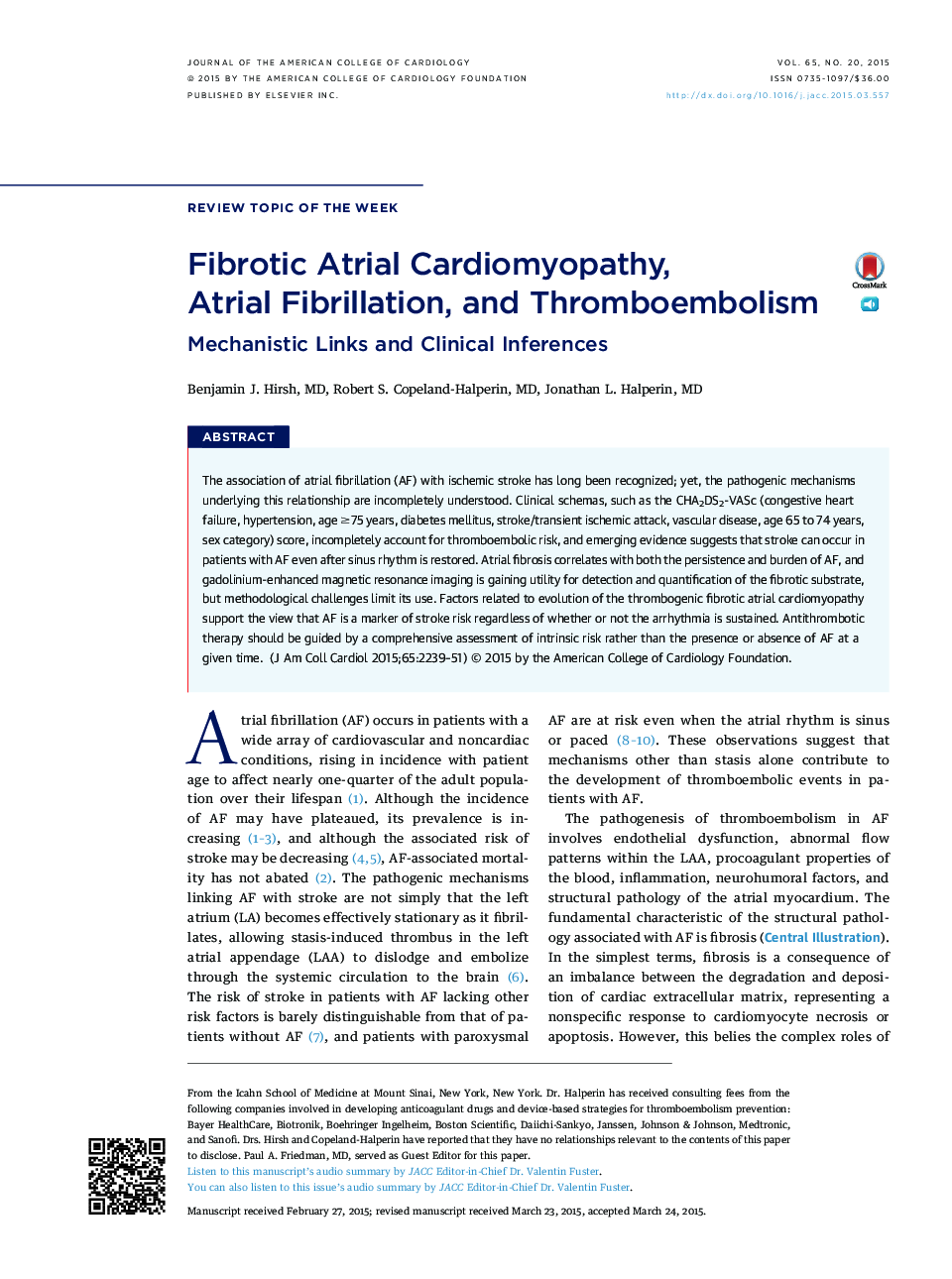| Article ID | Journal | Published Year | Pages | File Type |
|---|---|---|---|---|
| 2943391 | Journal of the American College of Cardiology | 2015 | 13 Pages |
The association of atrial fibrillation (AF) with ischemic stroke has long been recognized; yet, the pathogenic mechanisms underlying this relationship are incompletely understood. Clinical schemas, such as the CHA2DS2-VASc (congestive heart failure, hypertension, age ≥75 years, diabetes mellitus, stroke/transient ischemic attack, vascular disease, age 65 to 74 years, sex category) score, incompletely account for thromboembolic risk, and emerging evidence suggests that stroke can occur in patients with AF even after sinus rhythm is restored. Atrial fibrosis correlates with both the persistence and burden of AF, and gadolinium-enhanced magnetic resonance imaging is gaining utility for detection and quantification of the fibrotic substrate, but methodological challenges limit its use. Factors related to evolution of the thrombogenic fibrotic atrial cardiomyopathy support the view that AF is a marker of stroke risk regardless of whether or not the arrhythmia is sustained. Antithrombotic therapy should be guided by a comprehensive assessment of intrinsic risk rather than the presence or absence of AF at a given time.
